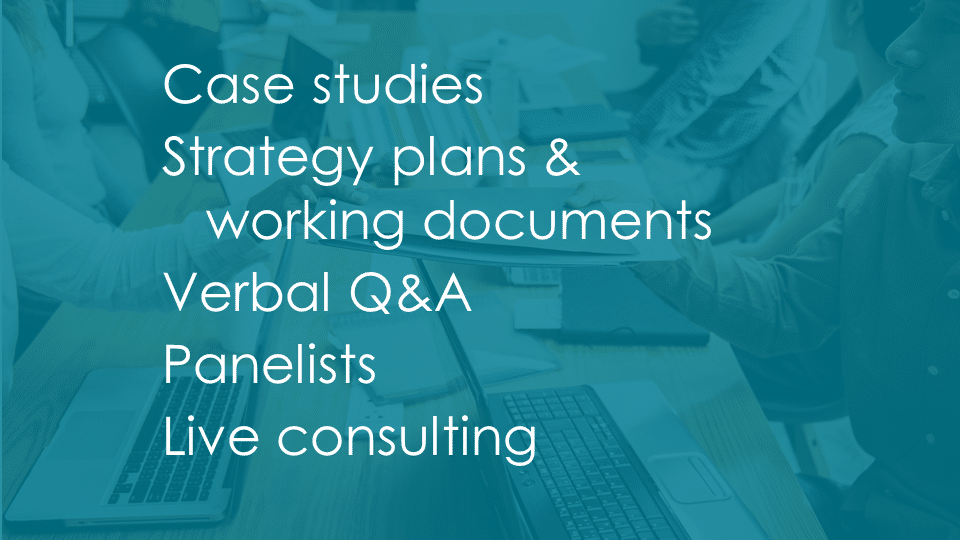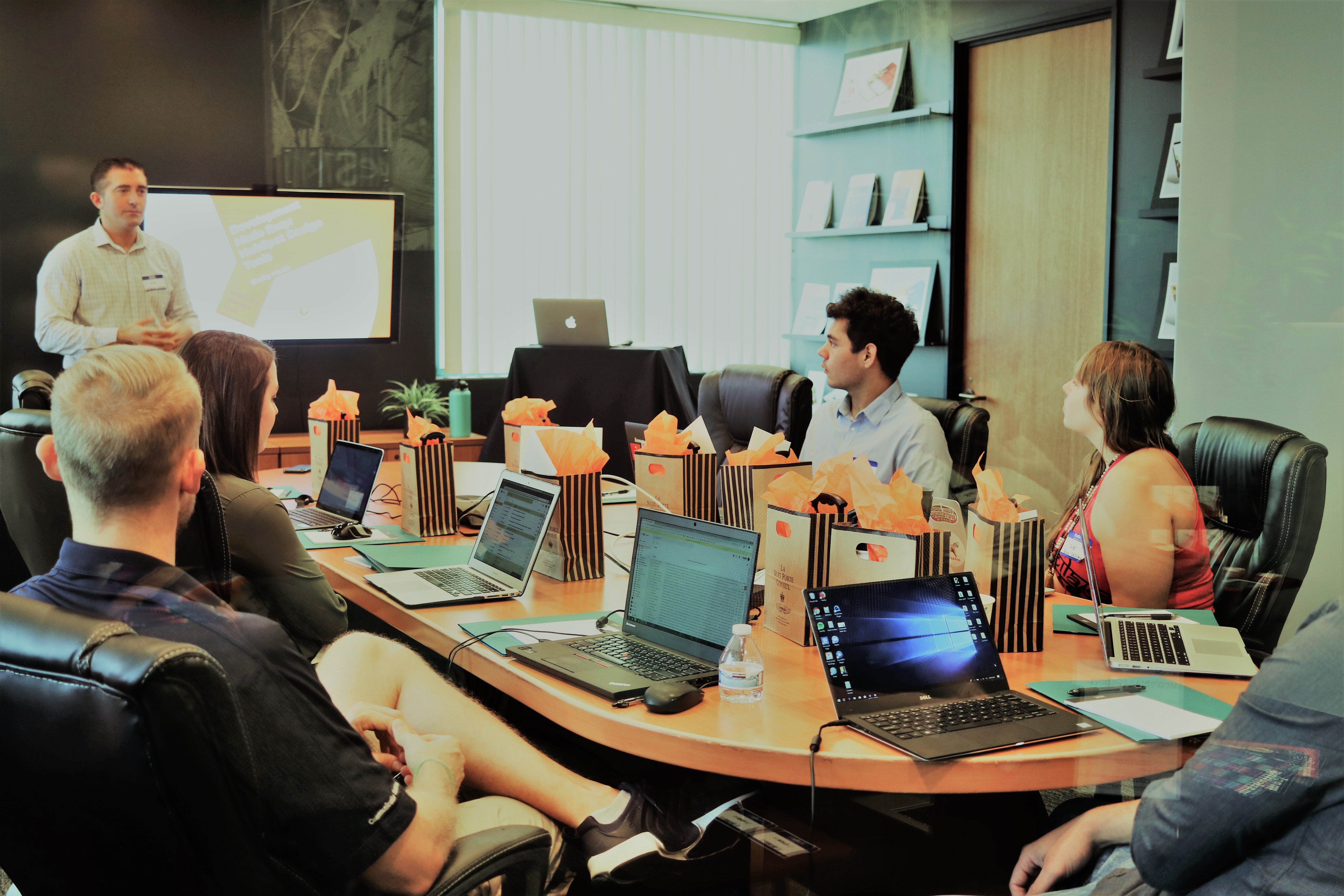
5 Creative Ideas to Improve Your Webinar Audience Engagement
I did my first webinar in 2003 at Comerica Bank. It was a bumpy ride back then. The first ten minutes alone were spent like this: Can you hear me now? Okay, I guess some people are having trouble getting on. Oops, we lost a couple people. Hmm, a few of you can’t see my screen. Ah crud, the firewall is blocking some people from joining.
Fun times! We’ve certainly come a long way in webinar software, thank goodness!
These days I deliver, view, or assist with webinars on a weekly basis. While the quality of webinar software has vastly improved, what hasn’t changed much, is the way webinars are still being delivered: 45 minutes of talking speakers, often reading their presentation, and a few minutes of Q&A. While this is the standard format, it does create a scenario of attendees checking out or multitasking. And that means they won’t remember much of what you worked so hard to put together in your presentation.
I’m here to encourage you that there is SO MUCH MORE you can be doing in a webinar to engage, and connect with, your virtual audience so that you can build quality client relationships and create better follow-up conversations.
In a previous article I wrote – 8 Best Webinar Practices For 2019 – I mentioned to “consider blocking your content into 15 minutes of information and then pause to allow for some type of interaction with your audience.” This style of webinar interaction encourages better retention of the information you share, which in turn can lead to better client success. Below are 5 creative ways to engage your audience in a webinar.

Case Studies
Case studies provide a story-like experience, and they enable you to showcase how your expertise helped clients solve a problem or improve a situation. Present the Problem-Solution-Outcome using visuals: images that fill the slide to evoke an emotion, graphs, and PowerPoint’s SmartArt in lieu of bullet points.
One way to include your audience is to pause after you present the problem and ask them an open-ended question: What would your next step be in this scenario? If you’ve experienced this, what did you do? This is a great way to get to know how your clients are thinking. If you know how they’re thinking, it can help you have a more personal follow-up conversation.
Strategy Plans and Working Documents
With strategy plans and working documents, you are basically providing some light training or consulting. This is such a great way to give insight into how you work with clients. And a strategy plan can give your audience an easy win that could warm them up for a next step in working with you. Most webinar platforms let you upload handouts. If you choose this strategy, be sure to highlight in your webinar promotion that your event is going to be a working session and describe what the outcomes for participants will be.
Verbal Q&A
Imagine you’re at a conference and at the end of the presentation, you get to ask your burning question to the keynote speaker up at the microphone. It’s nice to connect on that level with the speaker, isn’t it? And it adds interest for the audience. It should be no different in a webinar. Here’s what to think about when including verbal Q&A:
- Prepare your audience at the beginning and explain you’re intention is to make this an interactive experience, and that they will have the option to ask questions verbally.
- Use the Raise Hand feature in the webinar platform to manage unmuting individual lines. For example, GoToWebinar, Webex Events and ReadyTalk all have the Raise Hand feature somewhere in the attendee interface.
- When it’s time, here’s what I say: “We’d love to hear some of your questions at this time. If you want to ask your question verbally, click on the Raise Hand button and we’ll go through and unmute your line when it’s your turn.” I switch between written and verbal questions.
- If I can’t immediately hear the person, I say, “Unfortunately we can’t hear you, so we’re going to move on to the next person. Please type your question instead.”
- If the question is off topic or somehow not conducive to the presentation as a whole, I’ll answer very briefly and move on or say, “That’s a great question but requires an in-depth answer. I want to do it justice so I’ll send you an email with some information.”
Panelists
Guest speakers are nothing new. However, there are ways to make the conversation more interesting. Consider the following:
- Instead of each speaker going through their section of a presentation, come up with several questions for the panelists to discuss during the webinar. This way the entire presentation is unscripted. Include questions from the audience (during, not at the end).
- Have the panelists share their webcam.
- Always do a dry run to review nonverbal cues so that the speakers aren’t interrupting each other, go over the discussion topics, and run a sound check (headsets are best).
Live Consulting
Live consulting can seem a bit intimidating and does require some planning. But the payoff is huge. It’s interesting to the audience, switches things up, showcases how you work, and gives real-time results. How to do it:
- Choose something light of course that’s easy for you to do with 1-3 participants in the webinar (in other words, most of your presentation will be the live consulting).
- Ask for volunteers in your registration form: Would you like to participate in some live consulting in our event? If so, please provide your contact information. You will be notified if you’ve been selected. (You can also add any other questions to the registration form that would help you determine the right candidates.)
- Select the participants for the live consulting and have a call with them to make sure they are the right fit, gather any information you need, and that they will show up to your event.
- Another option: Contact current clients or prospects and ask them if they’d be willing to participate in some live consulting. You can determine what sort of incentive you want to include that is appropriate for your industry.
You only need to do one of these in your webinar to create more audience engagement. The more you can interact, the deeper the connection you will end up having with a virtual audience. When your participants experiences a better connection, they will be more open to follow-up conversations.
Here’s to your success!
~ Corena
Corena Bahr is a webinar expert, speaker and trainer helping experts at corporations and global firms deliver world-class webinars for client outreach and customer onboarding. She teaches experts how to create a human connection with a virtual audience, structure content for engagement, and how to use the “bells & whistles” of webinar platforms to drive business goals. Corena is also a LinkedIn Learning course author and public speaker.



